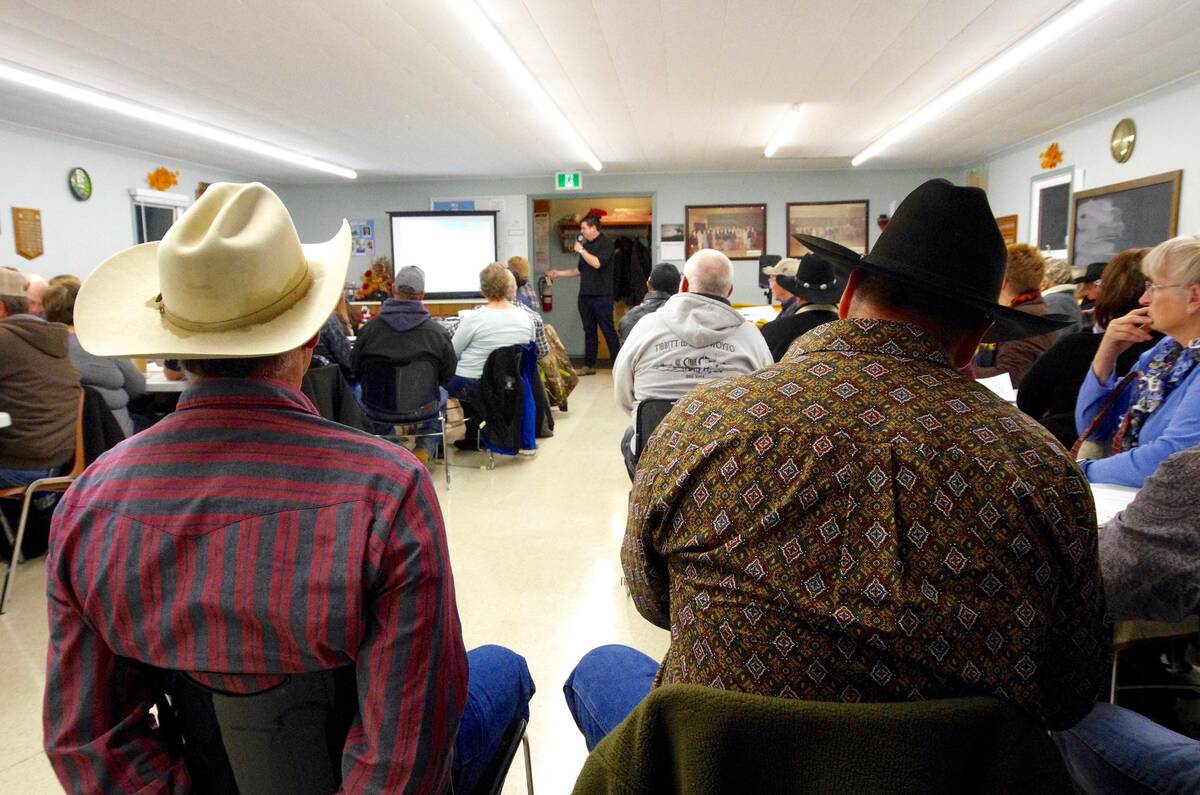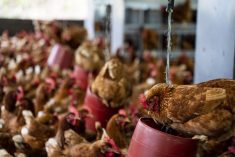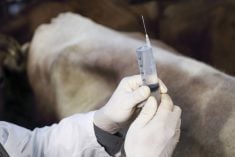A major new research program will help cattle producers manage two key diseases in their herds — and they can expect to have new tools in their hands in just a few years.
“We’re looking at new approaches for managing important issues like bovine respiratory disease and other production-limiting diseases such as Johne’s disease,” said University of Saskatchewan veterinary researcher Dr. Cheryl Waldner, who will be heading the project as research chair.
“It’s critical that we develop solutions for these problems that producers can actually use.”
Read Also

Don’t blow off that beef producer meeting
Local veterinarians and livestock experts often speak at producer events, sharing good advice for farmers on vaccines, calving, herd management and more.
Using checkoff money, the Beef Cattle Research Council is providing nearly a third of the $2.35 million in funding for the effort. (The federal Natural Sciences and Engineering Research Council and the university are the other funders.)
“In the past, there’s been a lot of very good research done in a lot of different centres across Canada addressing issues of importance to the beef industry,” said Waldner. “This chair position allows us to have the capacity to pull all that information together in a way that producers can actually use for making day-to-day decisions in their herds.”
Bovine respiratory disease and Johne’s disease were chosen as the initial focus of the research program because of the impact they can have on producers’ bottom lines.
Bovine respiratory disease is “an obvious choice” as it is the most costly disease for feedlot cattle in North America. And while Johne’s disease is more common in the dairy industry than the beef industry, “we have an opportunity to get ahead of it and control it before it becomes really widespread in the beef industry,” said Waldner.
That’s becoming more and more likely as the industry continues to consolidate, she added.
“As we reduce the number of producers and as we increase average herd sizes, there’s a very real biosecurity risk of bringing in diseases.”
There’s also a growing risk of antimicrobial resistance — particularly with bovine respiratory disease — and the research program will be tackling that as well.
“Antimicrobials are a very important resource to human and animal health, so ensuring we have good data to protect this valuable resource and to protect our herds moving forward is absolutely essential,” said Waldner.
“We’ll be developing tools to enhance disease surveillance and diagnostics and applying the results of the information to help us inform antimicrobial use. We want to look at options to make sure that we have the best evidence possible to inform antimicrobial use in our beef herds.”
Waldner plans to draw on precision agriculture concepts and technologies to speed up disease identification and fine-tune treatment options. Genomics, big data, computer modelling, smartphone sensors and apps, and other technologies can all play a significant role in managing herd health, she said.
“We really want to come up with better ways to use leading-edge technology to identify the right drug for the right animal at the right time.”
And by the time the five-year research program is at an end, a new suite of diagnostic and decision-support tools will be available for both veterinarians and producers “to integrate the different types of data that are available to them.”
“It won’t make the decisions for them, but it will help them pull all of the different sources of information together so that they have access to the most recent research,” said Waldner.
“They can then use that in informing herd management decisions. Having this in concrete, translatable pieces that can be used in day-to-day decision-making is a very real priority for this research program.”
That will become even more important as producers and the industry work to stay ahead of these potentially devastating threats, she added.
“If we can get ahead of some of these issues, we have the opportunity to head off important challenges that are interfering with animal health and welfare by integrating research with day-to-day decision-making,” said Waldner.
“We’re relatively early in the development of these issues in the beef industry, and we have the opportunity to get ahead of them.”















